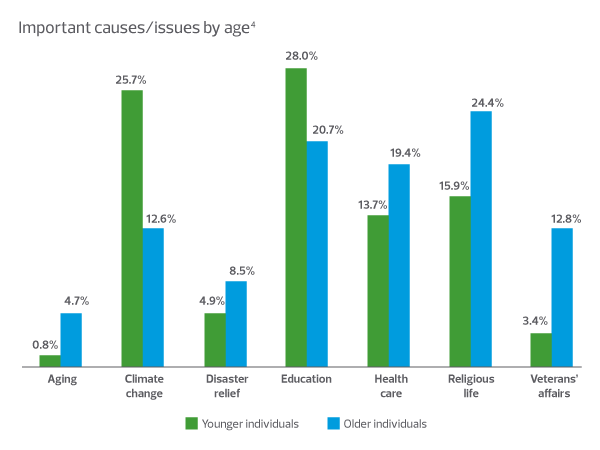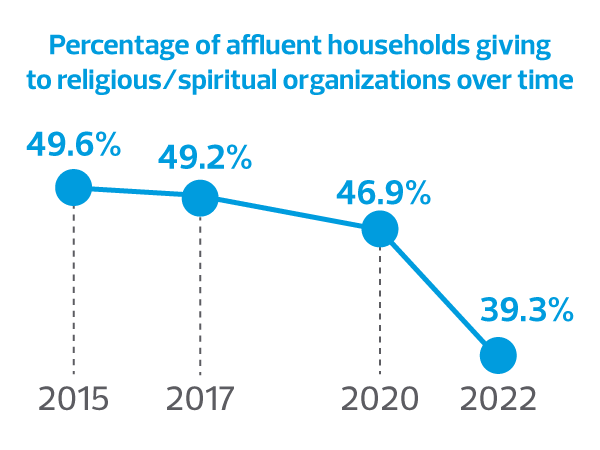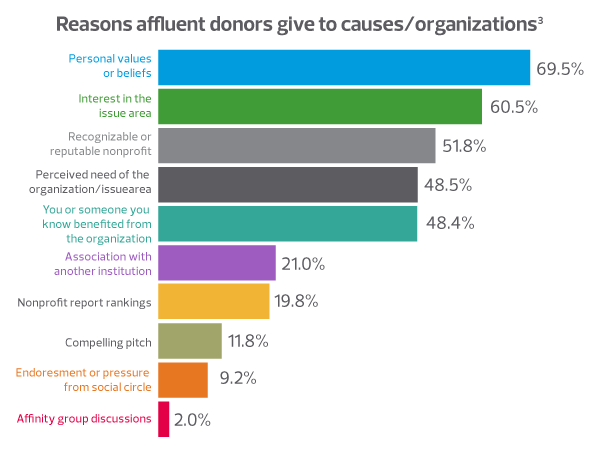Although Americans’ charitable giving declined in 2022, the long-term trend shows that larger gifts and higher-income donors have buoyed overall giving. Smaller donations and gifts from lower-income donors have consistently dropped. This is why analyzing the giving trends of more affluent donors is critical for nonprofits.
Bank of America and the Indiana University Lilly Family School of Philanthropy recently released an important study on the charitable giving of affluent households. The analysis focuses on 2022 data, but nonprofits can study trends that will affect philanthropic giving in the future. Here are three critical observations.
Younger donors have different preferences
Many nonprofits have long-established relationships with loyal and reliable donors. While this remains a source of strength in philanthropy, a shift is rapidly taking place. The proportion of those in younger generations making donations is rising, while the percentage of givers who are older and retired is falling. But younger generations’ giving preferences are notably different. The report shows a significant increase in the support of climate change and education, with a significant decrease in veterans’ affairs and religious life.




